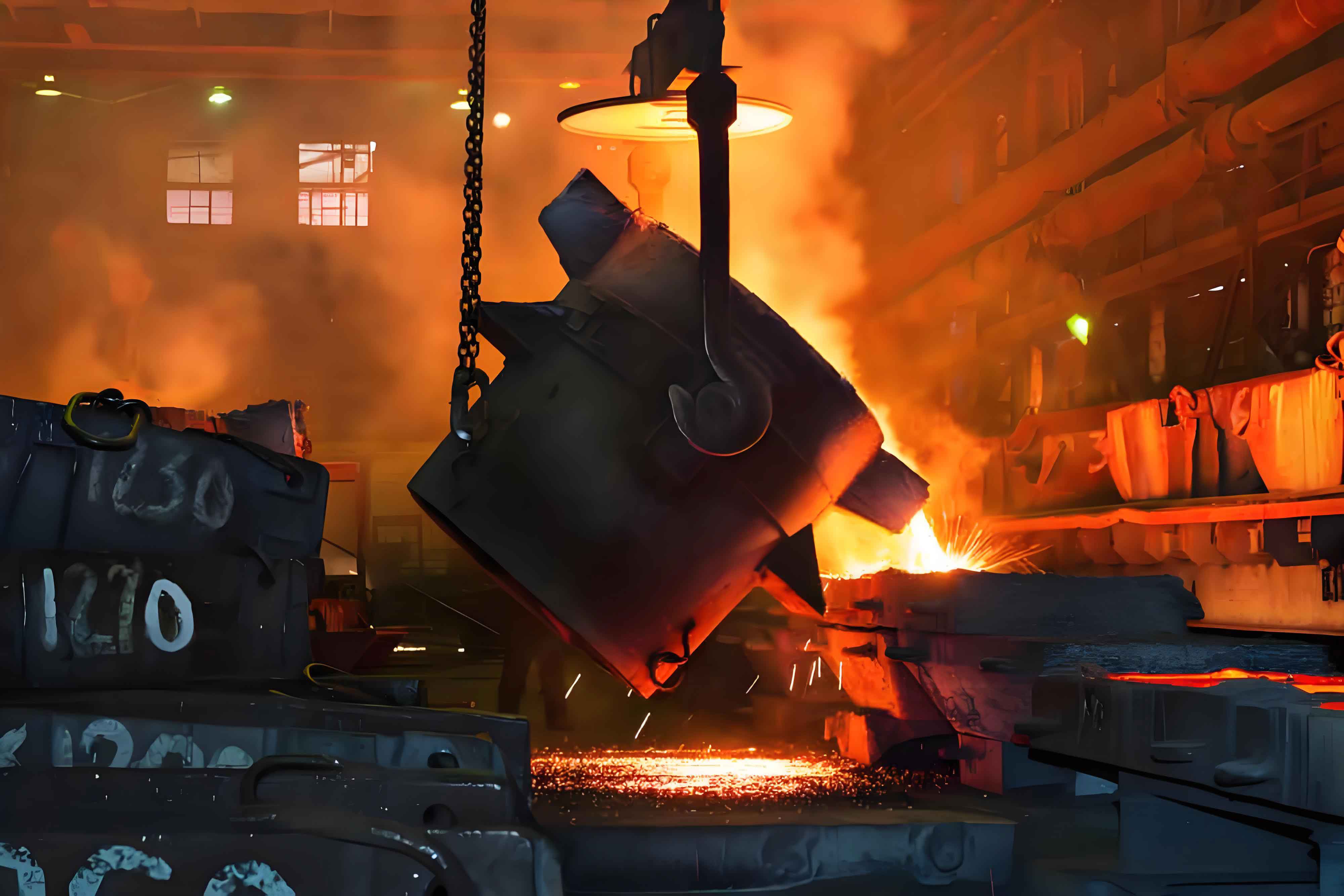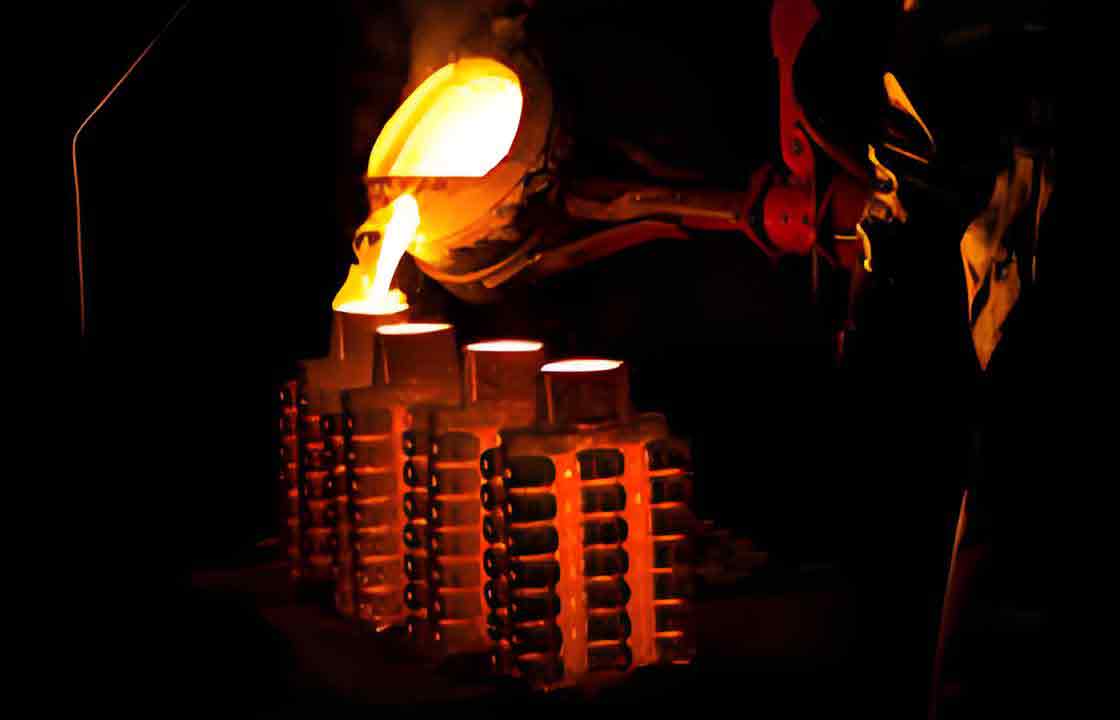Lost foam casting and lost wax casting are two prominent casting processes used to create complex and precise metal components. Both methods have unique advantages and are suitable for different applications. This article provides a comprehensive comparative analysis of lost foam casting and lost wax casting, focusing on their processes, advantages, disadvantages, and typical applications.
Introduction to Lost Foam Casting and Lost Wax Casting
Lost foam casting involves creating a foam pattern of the desired part, which is then coated with a refractory material. The foam pattern is placed in a sand mold, and molten metal is poured into the mold, causing the foam to vaporize and the metal to fill the cavity. Lost wax casting, also known as investment casting, uses a wax model that is coated with a ceramic shell. The wax is melted out to leave a hollow cavity, which is then filled with molten metal.
Key Steps in Lost Foam Casting
- Pattern Creation: Creating a foam model of the desired component.
- Coating: Coating the foam pattern with a refractory material.
- Molding: Placing the coated foam pattern in a sand mold.
- Metal Pouring: Pouring molten metal into the mold, vaporizing the foam pattern.
- Cooling and Removal: Allowing the metal to cool and solidify before removing the sand mold to reveal the casting.
Key Steps in Lost Wax Casting
- Pattern Creation: Making a wax model of the desired part.
- Assembly: Attaching multiple wax models to a central wax sprue to form a tree-like structure.
- Shell Building: Dipping the wax assembly into a ceramic slurry and coating it with sand to build a strong ceramic shell.
- Dewaxing: Heating the ceramic shell to remove the wax, leaving a hollow cavity.
- Metal Pouring: Pouring molten metal into the ceramic mold.
- Shell Removal: Breaking away the ceramic shell to reveal the metal casting.
- Finishing: Cleaning and removing any excess material from the casting.
Comparative Analysis
Process Efficiency
Lost Foam Casting
- Advantages: Simpler mold-making process, fewer steps, and reduced labor costs.
- Disadvantages: Requires precise control of foam pattern density and quality.
Lost Wax Casting
- Advantages: High precision and ability to produce intricate details.
- Disadvantages: More complex and labor-intensive process due to multiple steps involved in pattern creation, shell building, and dewaxing.
Material Compatibility
Lost Foam Casting
- Advantages: Suitable for a wide range of metals, including aluminum, cast iron, and steel.
- Disadvantages: Limited by the compatibility of the foam pattern material with the molten metal.
Lost Wax Casting
- Advantages: Highly versatile, suitable for a wide variety of metals and alloys.
- Disadvantages: Wax patterns may limit the size of the castings that can be produced.
Surface Finish and Detail
Lost Foam Casting
- Advantages: Can achieve good surface finish with proper coating and mold conditions.
- Disadvantages: Surface finish may be less precise compared to lost wax casting.
Lost Wax Casting
- Advantages: Excellent surface finish and ability to produce fine details.
- Disadvantages: Surface finish is highly dependent on the quality of the wax pattern and ceramic shell.
Production Volume and Cost
Lost Foam Casting
- Advantages: Cost-effective for medium to high production volumes due to simpler mold-making process.
- Disadvantages: Initial setup and pattern production can be costly for low-volume production.
Lost Wax Casting
- Advantages: Economical for small to medium production volumes, particularly for complex parts.
- Disadvantages: Higher labor and material costs can make it less cost-effective for high-volume production.
Tables for Comparative Analysis
Table 1: Process Comparison
| Aspect | Lost Foam Casting | Lost Wax Casting |
|---|---|---|
| Pattern Material | Foam | Wax |
| Mold Material | Sand | Ceramic shell |
| Steps Involved | Pattern creation, coating, molding, metal pouring, cooling | Pattern creation, assembly, shell building, dewaxing, metal pouring, shell removal, finishing |
| Suitable Metals | Aluminum, cast iron, steel | Wide variety of metals and alloys |
| Typical Applications | Automotive components, machine parts, large castings | Aerospace components, jewelry, medical devices |
Table 2: Advantages and Disadvantages
| Aspect | Lost Foam Casting | Lost Wax Casting |
|---|---|---|
| Advantages | Simpler mold-making, fewer steps, reduced labor costs | High precision, ability to produce intricate details |
| Disadvantages | Requires precise control of foam pattern density and quality | More complex and labor-intensive process |
| Surface Finish | Good surface finish with proper coating and mold conditions | Excellent surface finish, produces fine details |
| Production Volume | Cost-effective for medium to high volumes | Economical for small to medium volumes |
| Cost | Lower costs for high-volume production | Higher labor and material costs |
Lists for Key Considerations
Key Considerations for Choosing Lost Foam Casting
- Pattern Complexity: Ideal for components with moderate complexity and detail.
- Production Volume: Suitable for medium to high production volumes.
- Material Compatibility: Compatible with a range of metals, particularly aluminum and cast iron.
- Cost: More cost-effective for high-volume production due to simpler mold-making process.
Key Considerations for Choosing Lost Wax Casting
- Pattern Detail: Best for parts requiring high precision and intricate details.
- Production Volume: Suitable for small to medium production volumes.
- Material Compatibility: Versatile, compatible with a wide variety of metals and alloys.
- Cost: More economical for low to medium volumes, higher labor and material costs for high-volume production.
Applications of Lost Foam Casting and Lost Wax Casting
Lost Foam Casting Applications
- Automotive Industry:
- Engine blocks
- Cylinder heads
- Suspension components
- Machine Parts:
- Gearboxes
- Pump housings
- Valve bodies
- Large Castings:
- Industrial machinery parts
- Agricultural equipment components
- Construction machinery parts
Lost Wax Casting Applications
- Aerospace Industry:
- Turbine blades
- Engine components
- Structural parts
- Jewelry Manufacturing:
- Intricate jewelry pieces
- Custom designs
- High-precision components
- Medical Devices:
- Orthopedic implants
- Surgical instruments
- Dental prosthetics
Conclusion
Lost foam casting and lost wax casting are both valuable casting processes with distinct advantages and disadvantages. Lost foam casting is favored for its simplicity, cost-effectiveness in high-volume production, and suitability for large components. In contrast, lost wax casting is preferred for its precision, ability to produce intricate details, and versatility with various metals and alloys.
Choosing between these two casting methods depends on factors such as pattern complexity, production volume, material compatibility, and cost considerations. By understanding the strengths and limitations of each process, manufacturers can make informed decisions to optimize their casting operations and produce high-quality components for a wide range of applications.


